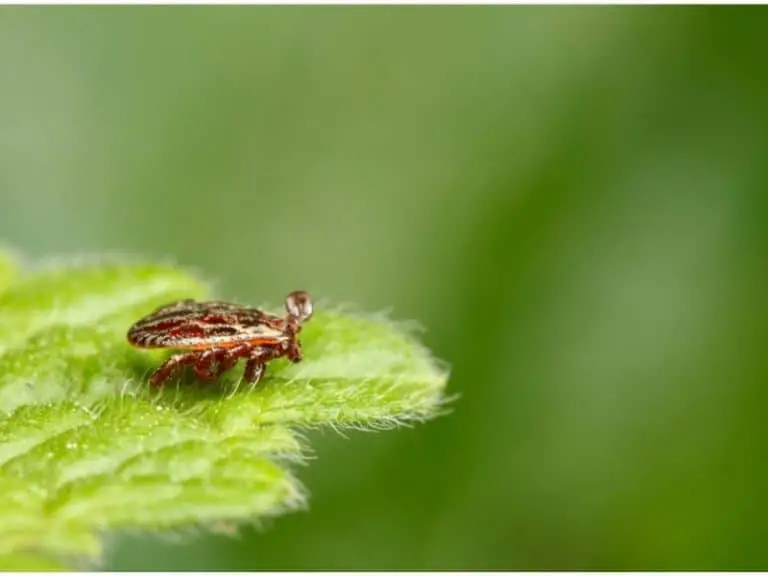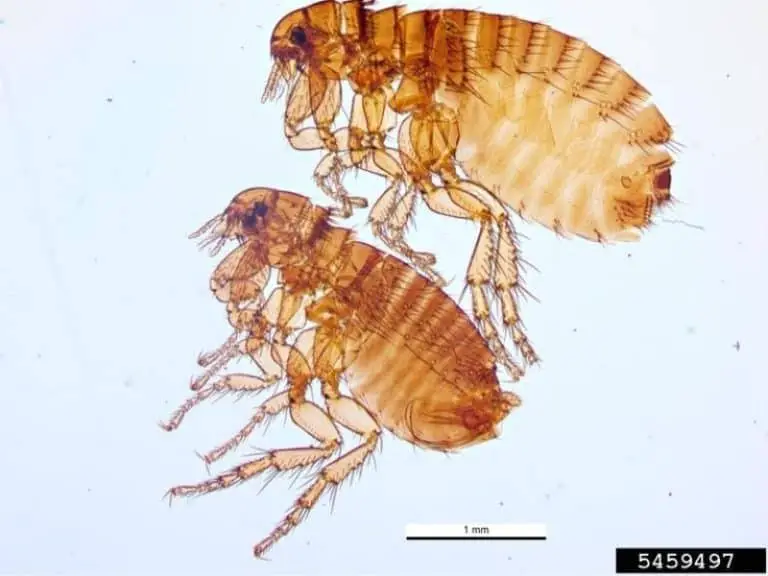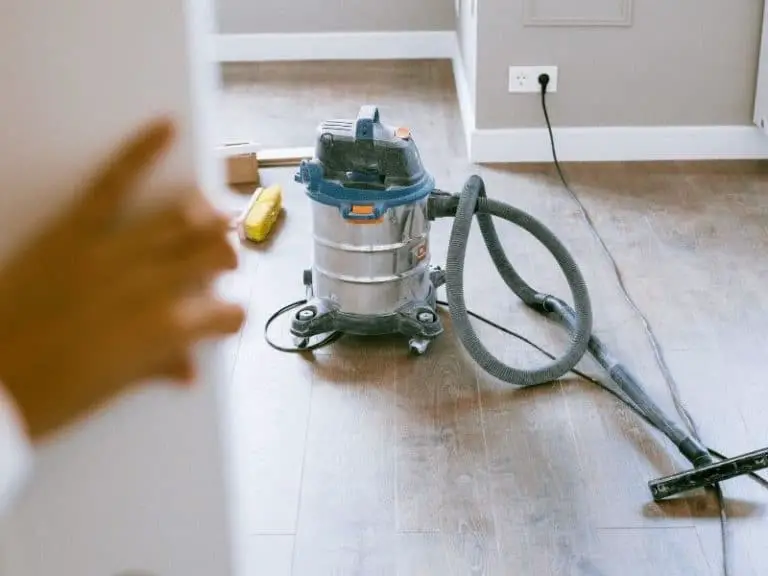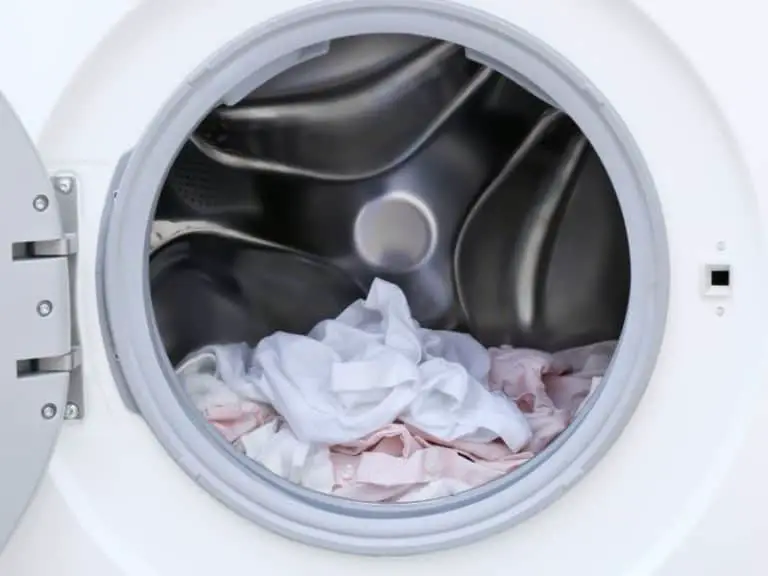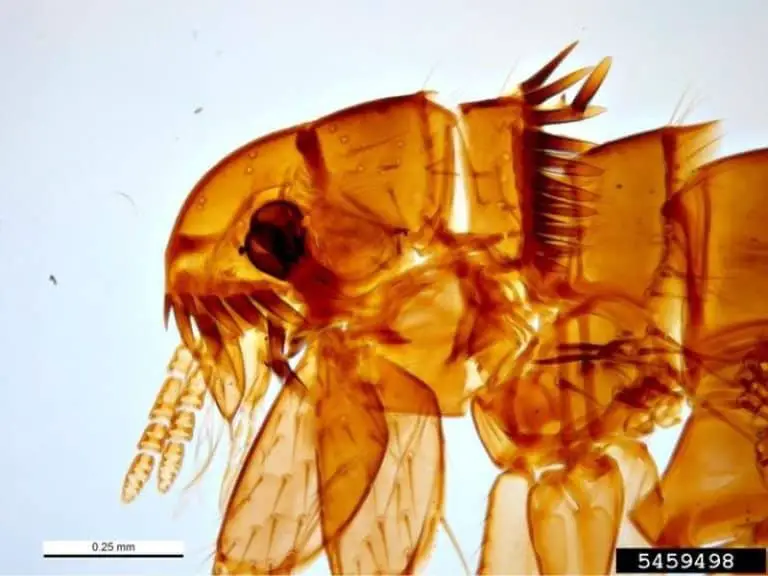15 Flea-Repelling Plants: Some Are Toxic For Pets
Besides pets, many areas in your home can harbor fleas, too. This is why it can be quite challenging to get rid of them. In many instances, failure to exterminate fleas in their various life stages can cause a chain of infestation. Fortunately, there are many natural remedies for those blood-sucking critters, and they include flea-repelling plants.
Many flea-repelling plants are used for cooking and medicinal purposes, like lemongrass, rosemary, sweet bay, lavender, chamomile, mint, eucalyptus and sage. Catnip, chrysanthemum, marigold and citronella repel fleas, too. However, others are toxic to pets, such as fleabane daisy, rue and wormwood.
Continue reading if you wish to put a flea infestation to an end without the use of questionable chemicals.
Below, we will talk about not one, not two, but a total of 15 plants that can keep fleas at bay!
Catnip
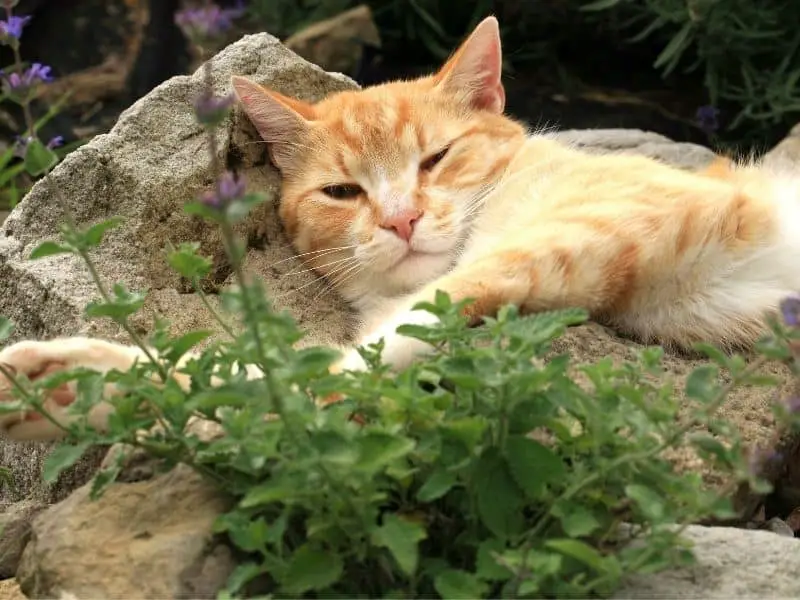
It’s no secret that cats love catnip. On the other hand, fleas hate catnip. This is why it’s a wonderful idea to grow catnip in and around your home if your purring pal (or dog) has a flea infestation or you want to keep it flea-free.
Also called catmint, catnip is easy to grow.
Unfortunately, it can spread really fast. But that’s a good thing, especially if your pet and home is severely infested with fleas and you want to put the problem under control.
Besides, catnip is also nice to look at, thanks to its heart-shaped leaves and white or light or intense violet flowers.
Tips for growing catnip:
- Consider planting catnip from plants rather than from seeds. That’s because catnip seeds require preparation before planting, which can take up lots of your time. For instance, to sprout faster, catnip seeds need to be placed in the freezer overnight and soaked in water for 24 hours.
- While catnip tolerates a wide variety of soil types, it grows better in well-draining soil.
- Catnip loves plenty of sun. Needless to say, it’s a good idea to plant them away from the shade. If planning on growing catnip indoors, make sure that you place its pot near the window or where it’s sunny. Unfortunately, catnip grown indoors is not as potent as catnip grown outdoors — but it can still repel fleas.
- Once catnip is established, it can thrive even with minimal care. Refrain from fertilizing the soil. As a matter of fact, fertilizer can decrease catnip’s smell and flavor, too.
- The problem with catnip is that it can spread rapidly. It’s due to this why it is considered an invasive plant. Planting catnip in a pot is an effective way to keep it from invading your garden. Similarly, removing the flowers before they turn into seeds is enough to keep catnip from spreading like wildfire.
Other uses for catnip:
- Besides fleas, catnip also repels mites, flies, mosquitoes and cockroaches.
- Dried catnip leaves can be turned into a tea that helps relieve anxiety, insomnia, indigestion and gas.
Related Post: Nine Bugs That Can be Mistaken for Fleas
Chamomile
Many people rely on chamomile tea and chamomile essential oil for a calmer mind and body. While it can be relaxing for humans, chamomile can be aggravating to fleas, which is why it’s a powerful flea repellent.
Planting chamomile in and around your home can help put a flea infestation under control — fleas cannot stand its soothing aroma.
Dried chamomile flowers may be steeped in hot water for several minutes, and the resulting brew may be sprayed on pets not only to repel fleas but also to soothe flea bites.
Tips for growing chamomile:
- When it comes to growing chamomile, you have two choices: Roman chamomile and German chamomile.
- Roman chamomile is the true chamomile. Also known as Russian chamomile and English chamomile, it is a groundcover plant because it doesn’t grow tall. On the other hand, German chamomile can grow up to two feet in height. It may not be the true chamomile, but it yields a more potent essential oil than Roman chamomile.
- Both Roman chamomile and German chamomile are grown similarly. For instance, both of them are best planted in part shade. However, they don’t have a problem with growing in full sun.
- One of the nicest things about chamomile, no matter the kind, is that it doesn’t require a lot of water. In fact, it is a drought-tolerant plant. Needless to say, it prefers dry soil. There is no need to water chamomile daily. Just make sure that you water it in times of prolonged drought.
- Roman chamomile or German chamomile can be grown indoors in a pot. It is a good idea to place it near a window for it to get enough sun. Chamomile can be grown indoors all year round.
Other uses for chamomile:
- Chamomile repels many flying insects, including flies and mosquitoes.
- When consumed in tea form, chamomile may help relieve stress, anxiety and menstrual pain.
Citronella
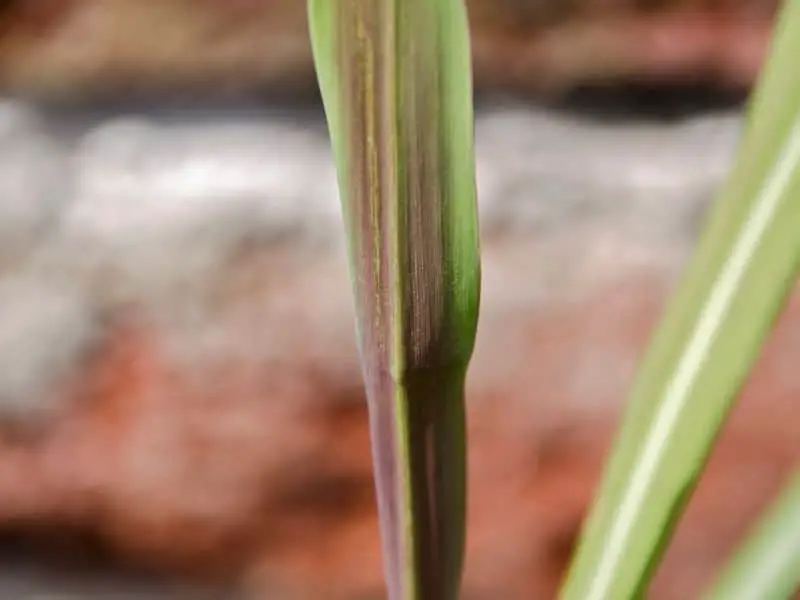
Does the name ring a bell? It doesn’t come as a surprise since citronella is a popular ingredient of all-natural mosquito repelling sprays, lotions and patches.
Besides mosquitoes, citronella can repel fleas, too. This is why citronella essential oil is a staple ingredient in many DIY flea sprays — those blood-sucking critters cannot stand its lemony smell.
Unfortunately, citronella is toxic for pets, especially cats. This is why you should plant another plant that can repel fleas if you have a pet. Or you may plant citronella where your pawed pal cannot access it.
Tips for growing citronella:
- The best time to plant citronella is during spring and summer. That’s because it is native to various tropical Asian countries such as India, Sri Lanka and Indonesia.
- Citronella loves direct sunlight. However, it doesn’t mind growing in a slightly shaded area, provided that it gets six to eight hours of sunlight per day. When it comes to growing citronella indoors, place it next to a window that gets direct sunlight. It’s also a great idea to place it outside your home for a few hours daily.
- Make sure that you water citronella daily. The goal is to mimic the humid climate of countries to which it’s native.
- Plant citronella in well-draining soil. But the best soil for it is moist loamy soil.
- Unfortunately, citronella is extremely sensitive to low temperatures. It will die when exposed to frost. It’s because of this why it’s a good idea to grow citronella in a pot if you live where it gets really chilly during the wintertime. Potted citronella can be easily transferred indoors to protect it from the cold.
Other uses for citronella:
- Traditional healers use citronella to promote the healing of wounds and to deal with fungal skin infections.
- Citronella essential oil is effective for lifting the mood and fighting fatigue.
Chrysanthemum
Besides being a repellent, chrysanthemums are insecticides, too. That’s because they contain pyrethrin, a chemical with insecticidal properties.
It’s for this reason why many insects, including fleas, steer clear of chrysanthemums at all costs! But worry not because chrysanthemums are harmless to pets like cats and dogs.
Mums for short, chrysanthemums are dubbed as the Queen of Fall Flowers because their colorful flowers tend to bloom before winter hits.
When it comes to repelling fleas, chrysanthemums definitely reign supreme.
Tips for growing chrysanthemum:
- One of the nicest things about mums is that it’s easy to grow them indoors. This means that you can install them in flea hotspots in your home to put the infestation under control.
- Plant chrysanthemums in well-draining soil. Although they love moisture, they hate overly wet soil. It’s a good idea to place chrysanthemums where they can get enough sun.
- Making chrysanthemums wonderful additions to any garden is the fact that their flowers are beautiful and colorful. If you want a lovely garden and also a home free of fleas, plant chrysanthemums where there’s plenty of sun. Mums will grow in partial shade, too. However, shade-grown ones may exhibit less flowering.
- The problem with mums is that they are sensitive to low temperatures. It’s because of this why the best time to plant them is during summer or early spring. This allows them to get established before winter hits.
- Some chrysanthemum species are annual while others are perennial. Perennial ones, which are usually known as hardy mums, live more than two years. Perennial chrysanthemums tend to die in winter, especially if it’s really cold. But worry not because they grow back when the wintertime ends.
Other uses for chrysanthemum:
- Fleas are not the only pests that mums can repel but also ticks, ants, beetles, bed bugs and more.
- Chrysanthemum flowers are edible, although the flavor can vary from one species to the next.
Eucalyptus
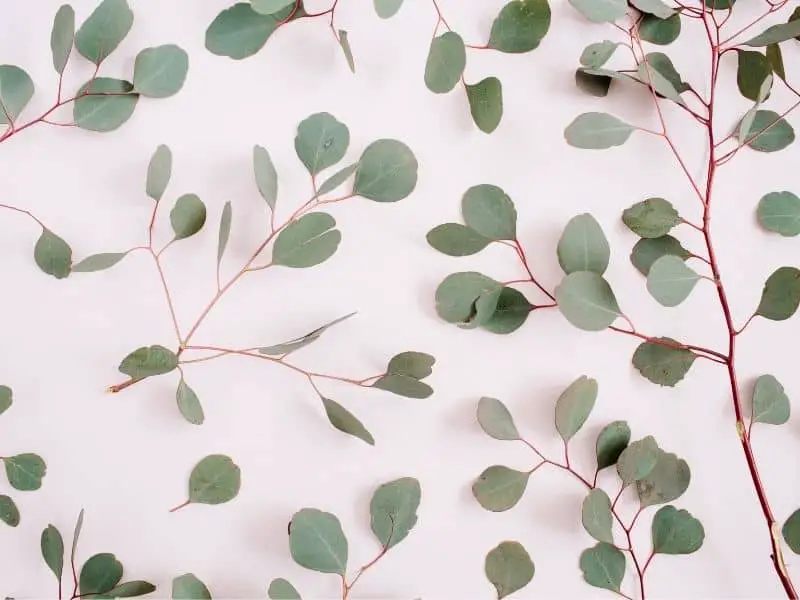
It’s no secret that eucalyptus is the favorite treat of koalas. On the other hand, it’s one of the most hated plants of fleas and many other common household pests, thanks to its unmistakable minty smell.
While eucalyptus trees can be 180 feet tall or more, you can grow small eucalyptus plants in pots — and use them to drive fleas away from your home or yard.
Approximately 60% of their growth happens within the first 10 years of their lives, which means that you can take advantage of them as flea-repelling plants for a long time.
Tips for growing eucalyptus:
- Eucalyptus plants need plenty of sun. This is why it’s a great idea to plant them in your yard where they can get sunlight most of the time. Inside the home, potted eucalyptus plants should be placed next to windows. However, it is recommended to take them outside during the day for them to get enough sun.
- The best soil for these flea-repelling plants is the kind that’s moist but drains very well.
- During the hottest months of the year, water eucalyptus plants on a daily basis. However, make sure that you allow the soil to dry out between each watering. This is especially true for potted eucalyptus plants. When it’s not hot and humid, it’s perfectly fine to water them a few times a week only.
- Before the wintertime goes full swing, make sure that you bring potted eucalyptus plants indoors. Prolonged, frigid temperatures can kill eucalyptus trees, young eucalyptus plants more so.
- You can grow eucalyptus plants indoors until they are very big. Once it’s already impractical to grow them indoors to keep fleas at bay, you may plant them somewhere in your backyard or donate them to a park. Either way, eucalyptus trees will keep on repelling fleas and other pesky insects.
Other uses for eucalyptus:
- Eucalyptus essential oil can repel mice, rats, pantry beetles, aphids, weevils and others.
- Dried eucalyptus leaves can be turned into a tea effective for joint pain and cold symptoms.
Fleabane Daisy
There are a couple of reasons why it’s a great idea to have fleabane daisy (also known as pennyroyal) plants in and around your home.
First, they bear pretty flowers.
Second, fleabane daisy plants produce oils that fleas cannot stand.
But before you deal with a flea infestation with the help of fleabane daisy, it’s important to note that it is extremely toxic to pets.
The ingestion of the plant’s oils can result in accelerated heart rate, high blood pressure, liver damage, and even death. So, if you have a furry pal that might come into contact with fleabane daisy, don’t plant it.
Tips for growing fleabane daisy:
- Fleabane daisy is a wildflower. This means that it doesn’t need a lot of love and care to thrive. As a matter of fact, fleabane daisy plants would much rather you ignore them than give them attention all the time.
- The best type of soil for fleabane daisy is the well-draining kind.
- Make it a habit to remove wilted flowers as soon as possible. This will encourage the growth of new flowers. Speaking of which, fleabane daisy tends to bear more flowers, whose colors can range anywhere from white, lilac, to red-violet, in the spring and fall.
- When planting fleabane daisy plants in the yard, it’s a good idea to place them in pots to keep them from spreading uncontrollably. Needless to say, fleabane daisy is an invasive type of plant.
- It is perfectly fine to plant fleabane daisy in a pot and grow it indoors. However, to keep it in a compact and easy-to-manage state, consider pinching the terminal ends of the stalks. This will encourage it to grow bushy rather than towering — some species of fleabane daisy can grow up to two feet in height.
Other uses for fleabane daisy:
- Fleabane daisy is effective for mice, rats, ticks, flies, gnats and mosquitoes.
- Traditional healers use fleabane daisy to deal with bleeding ulcers, cough and clogged sinuses.
Lavender
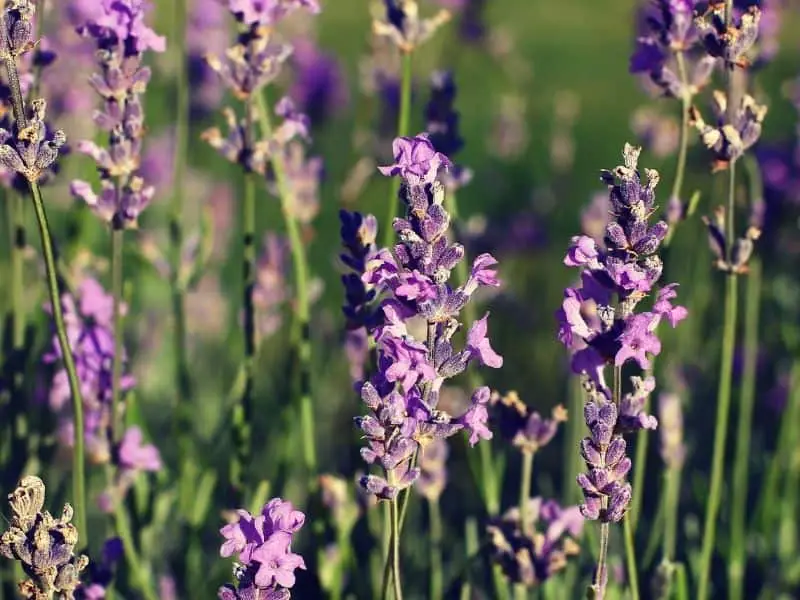
Many aromatherapy and spa treatments involve the use of lavender essential oil.
That’s because its smell can help relax the mind and soothe the body, too. While agreeable to humans, lavender is unbearable to fleas.
It’s due to this why growing some lavender plants indoors and outdoors can help make your life less stressful and free of fleas. The good news is that taking care of lavender is fairly easy.
It’s true that lavender flowers are only around for a short time, but lavender leaves are present all year round — and they can repel fleas just as effectively as the blooms.
Tips for growing lavender:
- Consider getting your hands on seedling plants as it can take a long time before lavender seeds germinate. In some instances, it can take a month before they sprout. Especially if you cannot wait to rid your home of fleas, planting lavender seedling plants is the way to go.
- One of the nicest things about lavender plants is that they can tolerate an assortment of growing conditions. However, they prefer a sunny climate. After all, lavender is native to arid areas.
- Well-draining soil is the perfect type of soil for lavender plants since they hate too much moisture.
- Composting is a great idea — it encourages the flowers and leaves to produce more volatile oils. This means that your lavender plants will repel fleas more effectively. It’s also recommended to prune lavender plants on a regular basis. Besides keeping them looking neat, it will promote new growth, too.
- When growing lavender plants indoors, place their pots where there’s plenty of light. There is no need to water them all the time since they are drought-tolerant and can thrive even with very little water.
Other uses for lavender:
- Hanging fresh or dried flowers is effective for moths, fleas and mosquitoes.
- Lavender flower buds may be dried and brewed for a relaxing and joint pain-reducing tea.
Lemongrass
In Asia, lemongrass is a common culinary herb. But all over the planet, it is used as a medicinal plant and insect repellent, too. Lemongrass is admired for its ability to repel both fleas and mosquitoes.
Unfortunately, lemongrass is far from being an ornamental plant — it looks like grass. It’s because of this why many homeowners refuse to grow it indoors.
But if having a flea-free home is more important than having lovely interiors, then you should consider placing some potted lemongrass plants in flea hotspots inside your home.
Tips for growing lemongrass:
- Most grocery stores sell lemongrass, which means that taking a quick trip to your favorite grocery store is all that’s needed to rid your home of fleas in an all-natural way. Get your hands on the freshest lemongrass around.
- Trim a couple of inches off the top of the lemongrass plant. Remove leaves that look dead.
- Place lemongrass in a glass containing a little water, and then leave it right next to a sunny window. After a few weeks, you will notice small roots growing from the bottom of the lemongrass plant. Allow the roots to grow more. Transfer lemongrass to your garden or a pot.
- One of the best things about lemongrass is that it’s not as picky as other plants, including flea-repelling ones, when it comes to soil type. However, it needs two things: plenty of sun and regular water.
- This is why potted lemongrass plants for indoor installation should be placed near a window that’s getting a lot of sun. But you may also take them outside during the day and bring them back inside at night. After all, fleas are nocturnal critters, which means that they go about their everyday lives in the nighttime.
Other uses for lemongrass:
- The main stalk (without the bulbs and leaves) can be used for flavoring stews, curries and more.
- Fresh or dried lemongrass leaves may be cut into small pieces and steeped in hot water for an uplifting tea.
Mint
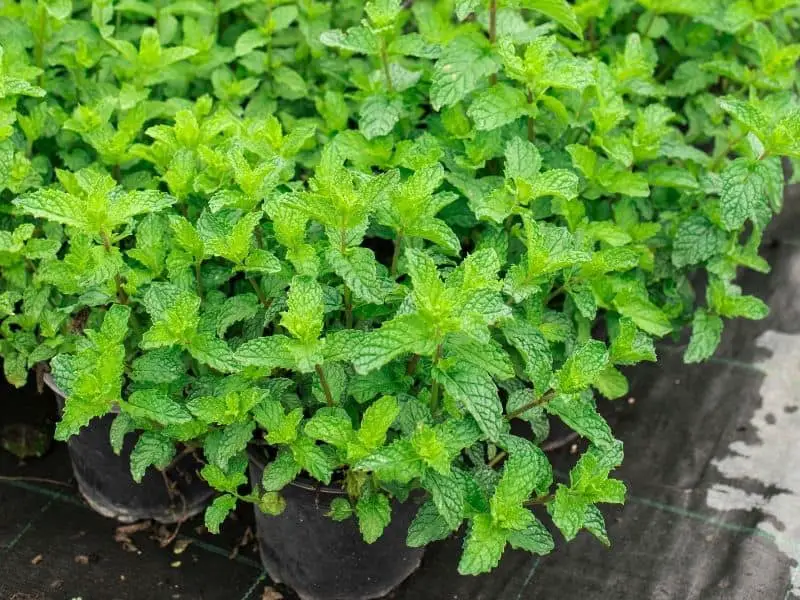
In the world of aromatherapy, mint is effective for boosting mental function and alleviating all sorts of aches and pains. It is also added to various products, ranging from gum, toothpaste to foot cream.
While humans enjoy the unmistakable smell and taste of mint, fleas detest mint completely. This is why having mint plants in and around your home can help you put a flea infestation under control.
Crushing or rubbing mint leaves and applying them to flea hotspots allows you to force fleas out of cracks and crevices and, ultimately, your life.
Tips for growing mint:
- Mint plants come in many varieties. Some of the most common ones include peppermint and spearmint. As a matter of fact, one of the flea-repelling plants we talked about earlier (fleabane daisy) is part of the mint family, too. No matter the type, one thing remains true: it’s easy to grow mint indoors and outdoors.
- The problem with mint is that it’s invasive. Worry not that it will ruin your garden or take over your home as you attempt to drive away fleas. That’s because it’s trouble-free to keep mint from spreading uncontrollably.
- Something as simple as planting mint plants in pots is enough to keep them in check. You can bury the pots into the soil for growing mint plants in the garden. You may opt for decorative pots for having mint plants indoors. Remember to plant mint plants in well-draining soil because they don’t like a lot of moisture.
- Mint plants tend to bend toward the light. This is why you should rotate indoor ones every three to four days to keep them from having an uneven appearance.
- Prune mint plants regularly to encourage fuller growth and to keep them from getting tall, too.
Other uses for mint:
- Besides flying and crawling insects, mint also repels rodents such as mice, rats and squirrels.
- Sniffing a crushed mint leaf may help relieve stress, mental fatigue, clogged nasal passages and headaches.
Marigold
A lot of vegetable farmers plant marigolds, too.
That’s because these plants that bear bright-colored flowers can repel an assortment of pests that can wreak havoc on the harvest.
Fleas are some of the many destructive insects that marigold can scare away. Planting marigolds near entrances and windows can help keep your home off-limits to fleas.
Marigolds are easy to grow indoors, too, because they are hardy and extremely versatile. If you have a flea infestation, plant some marigolds, and you’re golden!
Tips for growing marigold:
- Before growing marigolds indoors or outdoors, you should first choose among the different types. It is a good idea to opt for French marigold, especially if you wish to use the plant for repelling fleas inside your home. That’s because it’s the shorter and bushier variety, unlike African marigold that grows up to three feet in height.
- Always remember to plant only one marigold in every pot. To be healthy, marigold plants need ample air circulation. However, it is perfectly fine to plant several ones in a large container.
- Check that the pot has a drainage hole in the bottom to fend off root rot and other moisture-related issues.
- The best soil for marigold is a lightweight potting mix that you can easily buy from a gardening supplies store. When in doubt, you can improve the soil’s drainage by adding a handful of sand or perlite.
- Marigolds love to get a lot of sun. When taking care of them indoors, place their pots near windows or where there’s light. These flowering plants need at least six hours of sun exposure per day. Marigolds can survive winter, although they may die outdoors when the temperature reaches the freezing mark.
Other uses for marigold:
- Marigold has antiseptic and anti-inflammatory properties, making it effective for many skin problems.
- You can add the flowers to salads — French marigold has the best-tasting flowers.
Rosemary
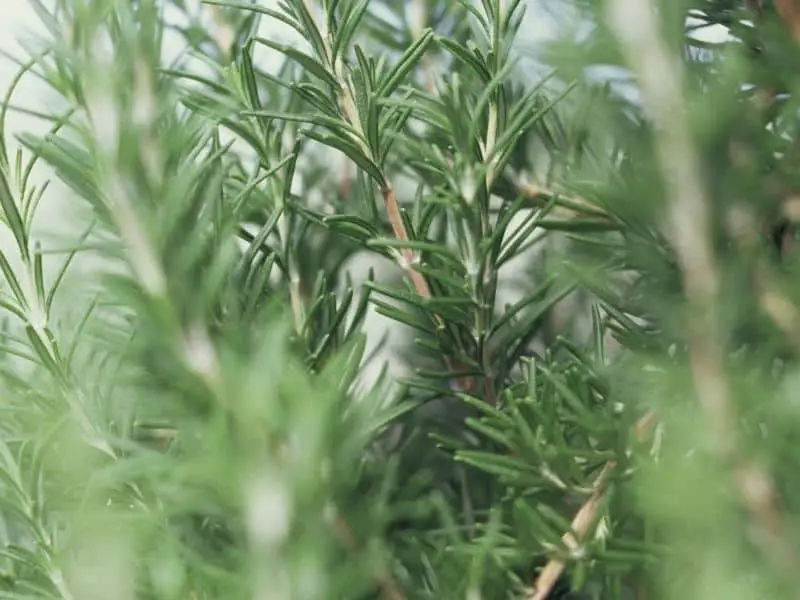
Many chicken and lamb dishes won’t taste the same without rosemary. Besides being a culinary herb, it’s also a medicinal plant.
Traditionally, rosemary is used for dealing with joint pain and low blood pressure (hypotension).
Even if you are not into creating all kinds of culinary masterpieces, it’s a wonderful idea to grow rosemary if you are being pestered by fleas.
That’s because it’s very good at repelling those blood-sucking insects.
It doesn’t really come as a surprise that rosemary has flea-repelling properties since it’s a member of the mint family of plants.
Tips for growing rosemary:
- Rosemary thrives better in warm and humid environments. It cannot tolerate really low temperatures. This is why it’s a great idea to plant rosemary plants in pots if you live where the winter weather is harsh so that you may easily place them indoors until spring comes.
- The best soil for rosemary plants is sandy, for it drains exceptionally well.
- As a general rule of thumb, you should water rosemary plants once or twice a week only. It depends on factors such as the size of the plants and the climate. See to it that you let the soil dry out between watering.
- Rosemary plants need a lot of sun — they should be exposed to it for six to eight hours per day. When growing them indoors, place them near a window that’s getting plenty of sun. Except during winter, you may take them outside and leave them there for a few hours to get their daily dose of the sun.
- The easiest way to propagate rosemary plants is by planting cuttings from existing ones. Remove the leaves on the bottom two-thirds and stick them into sandy soil. Regularly spray with water until roots start to grow.
Other uses for rosemary:
- Placing some rosemary sprigs on the grill will help drive away flies and mosquitoes during a cookout.
- Drinking rosemary tea (or taking a whiff of its aroma) can help lift the mood and relieve stress.
Rue
There are so many pests that rue can repel. Some of them include beetles, moths, aphids and flies. The plant with a strong odor can drive away maggots, slugs and snails, too. Rue can also keep fleas at bay.
Also known as garden rue and herb of grace, it is cultivated not only as an insect repellent but also as an ornamental and medicinal plant. Sadly, rue can be toxic to pets if large amounts of its chemical components are ingested. To be safe, consider relying on a different flea-repelling plant if you have a four-legged friend and want to deal with fleas.
Tips for growing rue:
- Rue is rarely grown in gardens these days. It’s for the fact that it is toxic to pets. But if you don’t have pets, you may count on it to eliminate fleas in and around your home.
- Many types of soil are favorable for rue. However, the plant prefers the well-draining type. As a matter of fact, rue does very well in rocky and dry soil that many plants hate. Needless to say, rue is a drought-tolerant plant and does not require regular watering — it’s perfect for very busy homeowners.
- To grow healthy, rue needs plenty of sun. But the good news is that it may thrive indoors, too. Just make sure that you place its pot where it has access to the sun, such as next to a window.
- Instead of placing multiple rue plants indoors, you may simply dry rue leaves. Place them in cloth bags and put the cloth bags in flea hotspots.
- Be careful when handling rue. That’s because its sap may cause irritation and burning sensation. It may leave a rash, too, especially if you have sensitive skin.
Other uses for rue:
- In Ethiopia, coffee is flavored with rue — rue sprigs are steeped in coffee to give it a hint of a citrus taste.
- Traditional healers sometimes apply rue directly to achy or injured joints and muscles.
Sage
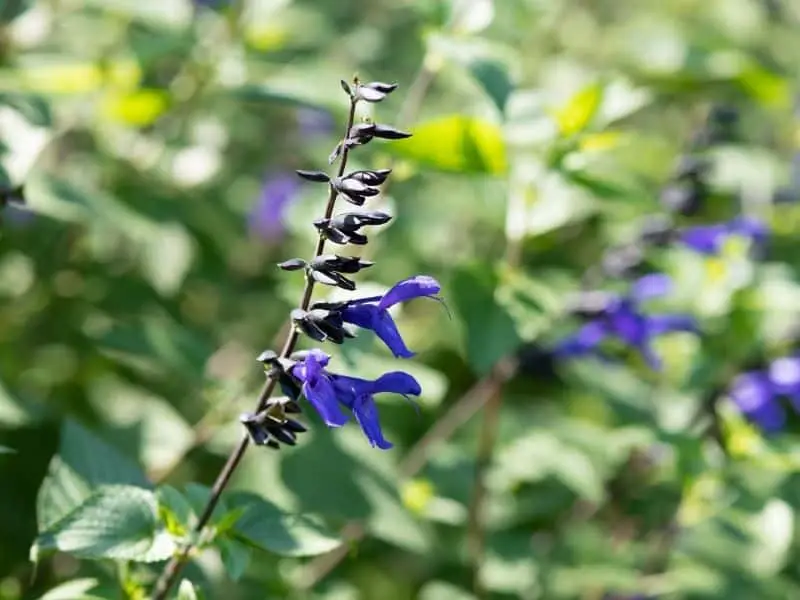
Did you know that there are many sage plant types, and not all of them are edible?
If you want to take care of something you may use as a culinary herb, opt for garden sage, purple sage, golden sage or tri-color sage.
Edible types of sage not only help make all sorts of dishes, especially Mediterranean ones, more amazing but also get rid of fleas. The good news is that sage plants can be grown both indoors and outdoors.
This means that you can use them to keep various areas in and around your home free of fleas.
Tips for growing sage:
- Because sage is native to the Mediterranean region, it doesn’t come as a surprise why it needs full sun. This is why you should plant it away from shaded areas of your garden if you want this flea-repelling culinary and medicinal herb to thrive and bear white, pink, blue or purple flowers in the summertime.
- While sage loves plenty of sun, it hates lots of water. Due to this, plant it in well-draining soil.
- It’s a good idea to propagate sage by planting cuttings. You can grow sage by planting its seeds, too. However, it will take about three weeks before the sprout — you will need lots of patience.
- Although sage needs tons of sun exposure, you may also grow it in a pot and take care of it indoors. Besides allowing you easy access to the herb each time you’re in the kitchen, this also enables you to repel fleas indoors. Just place the potted sage next to a window or take it outside for six to eight hours per day to keep it healthy.
- Avoid overwatering sage at all costs. Otherwise, it may form fungal diseases. Sage needs to be watered once or twice a week only, which is why it’s so easy to take care of, especially indoors.
Other uses for sage:
- Dried sage leaves may be turned into a tea that may help fend off heart disease and cancer.
- You may crush some sage leaves and apply the oil on your skin to repel mosquitoes.
Sweet Bay
All seasoned chefs and many casual cooks know that sweet bay (or bay or laurel bay) can make various beef, pork, chicken and duck recipes divine. Not a lot of people know that it’s also very good at driving away fleas. No matter if fresh or dried, sweet bay leaves can help you put a flea infestation under control.
Unfortunately, sweet bay is toxic to cats and dogs. Ingestion of it may cause stomach pain, vomiting and diarrhea in pets. If you have a whiskered friend around, consider relying instead on a pet-friendly plant that can repel fleas.
Tips for growing sweet bay:
- Sweet bay is a tree that can grow up to 60 feet tall. However, that’s in the wild. You can plant sweet bay in a container to keep it in a state that’s trouble-free to manage.
- Even if you are planning on growing sweet bay outside your home, it’s still a good idea to place it in a pot. This is especially true if you have a small garden and no room is available for a massive tree. You may bury the container in the soil to make it seem like sweet bay is planted directly in the ground.
- The good news is that sweet bay grows into a tree very slowly. You can also prune it yearly to keep it small.
- It’s a must that you protect sweet bay from the elements — it hates a lot of sun, and cannot tolerate low temperatures. Due to this, sweet bay finds it easy to thrive indoors.
- You should water potted sweet bay only when the soil is dry. To keep it in tip-top shape so that you may count on it to make your dishes unforgettable and your home free of fleas, apply organic fertilizer in spring and summer.
Other uses for sweet bay:
- Besides fleas, sweet bay can repel many pests, including pantry ones such as ants and moths.
- Tea out of dried sweet bay leaves can help deal with indigestion and migraine.
Wormwood
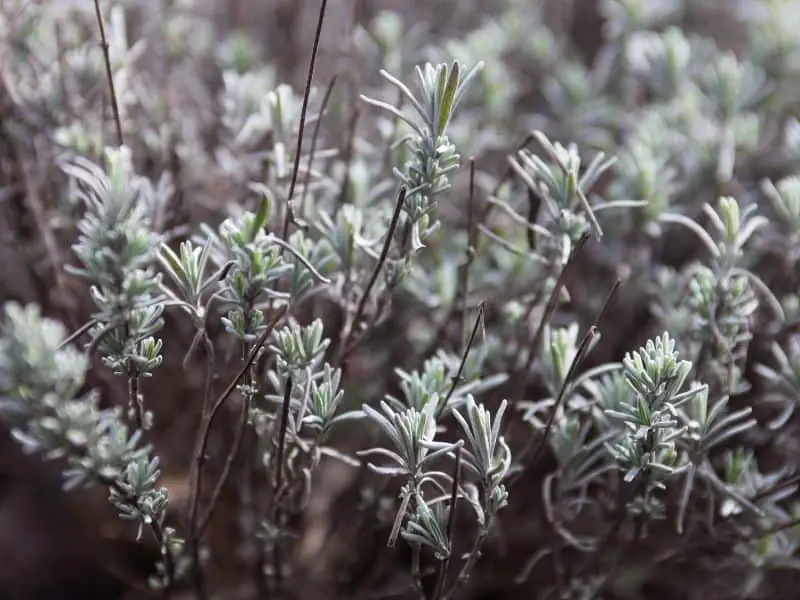
First things first: Wormwood is toxic to pets.
If you have a cat or dog, rely on a different flea-repelling plant that won’t cause any harm to your furry friend.
Don’t let its smell fool you. Although wormwood, particularly the most common variety called sweet Annie, has a pleasant smell, fleas absolutely hate it.
This is why planting wormwood in and around your home can help deal with a flea infestation. The good news is that this flea-repelling plant is so easy to grow and take care of.
Tips for growing wormwood:
- No matter if you wish to plant wormwood in the garden or in a pot, make sure that the soil drains very well. That’s because the plant doesn’t like a lot of water. As a general rule of thumb, you should water wormwood once every seven to 10 days only to keep it from ending up with root rot.
- Root rot is the only problem that you may encounter when growing wormwood. Thanks to its smell, wormwood is practically impervious to being feasted on by an assortment of garden pests.
- When growing wormwood in a container, it’s a good idea to fertilize it once a year.
- It’s in a sunny location where wormwood thrives best. However, it doesn’t have any problem growing in part shade, too. To keep wormwood inside the home healthy, place it near a window to allow it to get its dose of sun.
- Wormwood is an invasive plant. To keep it from spreading uncontrollably, regular pruning is recommended.
Other uses for wormwood:
- Wormwood is used for flavoring absinthe, the green-colored liquor banned in the US and other countries.
- Traditional healers use wormwood to treat digestive issues such as loss of appetite and indigestion.
Just Before You Plant Flea-Repelling Plants
Some flea-repelling plants can make heads turn towards their direction because they look pretty.
Others can make your gastronomic creations taste so much better. Then there are also flea-repelling plants traditional healers use to deal with and prevent all sorts of health problems.
Unfortunately, some plants that are highly effective for driving away fleas can be toxic to pets.
If you have pets, opt for a flea-repelling plant that’s pet-friendly. While trying to rid your home of fleas, it’s also important to take into account the safety of your cat or dog.
Photo credit: ©canva.com
Medical Disclaimer: TheHomePestControl is a digital publisher and does not offer personal health or medical advice. The contents of this website are not intended to substitute for professional medical advice, diagnosis, or treatment.
Affiliate Disclaimer: As an Amazon Associate, I earn from qualifying purchases made on our website. If you make a purchase through links from this website, I may earn a commission at no additional cost to you.

